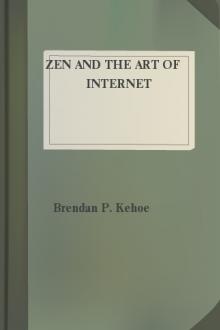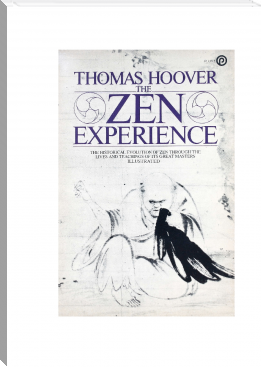Zen and the Art of Internet, Brendan P. Kehoe [top 100 novels TXT] 📗

- Author: Brendan P. Kehoe
- Performer: -
Book online «Zen and the Art of Internet, Brendan P. Kehoe [top 100 novels TXT] 📗». Author Brendan P. Kehoe
More information on using their archive server can be obtained by writing to their server address service@nic.ddn.mil with a Subject: of help.
There are different ``brands'' of archive server, each with its own set of commands and services. Among them there often exists a common set of commands and services (e.g. index, help, etc). Be that as it may, one should always consult the individual help for a specific server before assuming the syntax---100K surprises can be hard on a system.
FTP-by-Mail Servers Some systems offer people the ability to receive files through a mock-FTP interface via email. Anonymous FTP for a general overview of how to FTP. The effects of providing such a service varies, although a rule of thumb is that it will probably use a substantial amount of the available resources on a system.
The ``original'' FTP-by-Mail service, BITFTP, is available to BITNET users from the Princeton node PUCC. It was once accessible to anyone, but had to be closed out to non-BITNET users because of the heavy load on the system.
In response to this closure, Paul Vixie designed and installed a system called FTPmail on one of Digital's gateway computers, decwrl.dec.com. Write to ftpmail@decwrl.dec.com with help in the body of the letter for instructions on its use. The software is undergoing constant development; once it reaches a stable state, other sites will be encouraged to adopt it and provide the service also.
Newsgroup Creation
Everyone has the opportunity to make a Call For Votes on the Usenet and attempt to create a newsgroup that he/she feels would be of benefit to the general readership. The rules governing newsgroup creation have evolved over the years into a generally accepted method. They only govern the ``world'' groups; they aren't applicable to regional or other alternative hierarchies.
Discussion
A discussion must first take place to address issues like the naming of the group, where in the group tree it should go (e.g. rec.sports.koosh vs rec.games.koosh?), and whether or not it should be created in the first place. The formal Request For Discussion (RFD) should be posted to news.announce.newgroups, along with any other groups or mailing lists at all related to the proposed topic. news.announce.newgroups is moderated. You should place it first in the Newsgroups: header, so that it will get mailed to the moderator only. The article won't be immediately posted to the other newsgroups listed; rather, it will give you the opportunity to have the moderator correct any inconsistencies or mistakes in your RFD. He or she will take care of posting it to the newsgroups you indicated. Also the Followup-To: header will be set so that the actual discussion takes place only in news.groups. If a user has difficulty posting to a moderated group, he or she may mail submissions intended for news.announce.newgroups to the address announce-newgroups@rpi.edu.
The final name and charter of the group, and whether it will be moderated or unmoderated, will be determined during the discussion period. If it's to be moderated, the discussion will also decide who the moderator will be. If there's no general agreement on these points among those in favor of a new group at the end of 30 days, the discussion will be taken into mail rather than continued posting to news.groups; that way, the proponents of the group can iron out their differences and come back with a proper proposal, and make a new Request For Discussion.
Voting After the discussion period (which is mandatory), if it's been determined that a new group really is desired, a name and charter are agreed upon, and it's been determined whether the group will be moderated (and by whom), a Call For Votes (CFV) should be posted to news.announce.newgroups, along with any other groups that the original Request For Discussion was posted to. The CFV should be posted (or mailed to the news.announce.newgroups moderator) as soon as possible after the discussion ends (to keep it fresh in everyone's mind).
The Call for Votes should include clear instructions on how to cast a vote. It's important that it be clearly explained how to both vote for and against a group (and be of equivalent difficulty or ease). If it's easier for you or your administrator, two separate addresses can be used to mail yes and no votes to, providing that they're on the same machine. Regardless of the method, everyone must have a very specific idea of how to get his/her vote counted.
The voting period can last between 21 and 31 days, no matter what the preliminary results of the vote are. A vote can't be called off simply because 400 no'' votes have come in and only twoyes'' votes. The Call for Votes should include the exact date that the voting period will end---only those votes arriving on the vote-taker's machine before this date can be counted.
To keep awareness high, the CFV can be repeated during the vote, provided that it gives the same clear, unbiased instructions for casting a vote as the original; it also has to be the same proposal as was first posted. The charter can't change in mid-vote. Also, votes that're posted don't count---only those that were mailed to the vote-taker can be tallied.
Partial results should never be included; only a statement of the specific proposal, that a vote is in progress on it, and how to cast a vote. A mass acknowledgement (Mass ACK'' orVote ACK'') is permitted; however, it must be presented in a way that gives no indication of which way a person voted. One way to avoid this is to create one large list of everyone who's voted, and sort it in alphabetical order. It should not be two sorted lists (of the yes and no votes, respectively).
Every vote is autonomous. The votes for or against one group can't be transferred to another, similar proposal. A vote can only count for the exact proposal that it was a response to. In particular, a vote for or against a newsgroup under one name can't be counted as a vote for or against another group with a different name or charter, a different moderated/unmoderated status, or, if it's moderated, a different moderator or set of moderators. Whew!
Finally, the vote has to be explicit; they should be of the form I vote for the group foo.bar as proposed or I vote against the group foo.bar as proposed. The wording doesn't have to be exact, your intention just has to be clear.
The Result of a Vote
At the end of the voting period, the vote-taker has to post (to news.announce.newgroups) the tally and email addresses of the votes received. Again, it can also be posted to any of the groups listed in the original CFV. The tally should make clear which way a person voted, so the results can be verified if it proves necessary to do so.
After the vote result is posted to news.announce.newgroups, there is a mandatory five-day waiting period. This affords everyone the opportunity to correct any errors or inconsistencies in the voter list or the voting procedure.
Creation of the Group
If, after the waiting period, there are no serious objections that might invalidate the vote, the vote is put to the ``water test.'' If there were 100 more valid YES/create votes than NO/don't create votes, and at least two-thirds of the total number of votes are in favor of creation, then a newgroup control message can be sent out (often by the moderator of news.announce.newgroups). If the 100-vote margin or the two-thirds percentage isn't met, the group has failed and can't be created.
If the proposal failed, all is not lost---after a six-month waiting period (a ``cooling down''), a new Request For Discussion can be posted to news.groups, and the whole process can start over again. If after a couple of tries it becomes obvious that the group is not wanted or needed, the vote-taker should humbly step back and accept the opinion of the majority. (As life goes, so goes Usenet.)
Glossary
This glossary is only a tiny subset of all of the various terms and other things that people regularly use on The Net. For a more complete (and very entertaining) reference, it's suggested you get a copy of The New Hacker's Dictionary, which is based on a VERY large text file called the Jargon File. Edited by Eric Raymond (eric@snark.thyrsus.com), it is available from the MIT Press, Cambridge, Massachusetts, 02142; its ISBN number is 0-262-68069-6. Also see RFC-1208, A Glossary of Networking Terms.
:-)
This odd symbol is one of the ways a person can portray mood'' in the very flat medium of computers---by usingsmilies.'' This is `metacommunication', and there are literally hundreds of them, from the obvious to the obscure. This particular example expresses ``happiness.'' Don't see it? Tilt your head to the left 90 degrees. Smilies are also used to denote sarcasm.
Network addresses are usually of two types:
the physical or hardware address of a network interface card; for ethernet this 48-bit address might be 0260.8C00.7666. The hardware address is used to forward packets within a physical network. Fortunately, network users do not have to be concerned about hardware addresses since they are automatically handled by the networking software.
The logical or Internet address is used to facilitate moving data between physical networks. The 32-bit Internet address is made up of a network number, a subnetwork number, and a host number. Each host computer on the Internet, has a unique address. For example, all Internet addresses at Colorado State have a network number of 129.82, a subnet number in the range of 1-254, and a host number in the range of 1-254. All Internet hosts have a numeric address and an English-style name. For example, the Internet address for UCC's CYBER 840 is 129.82.103.96; its Internet name is csugreen.UCC.ColoState.EDU.
address resolution Conversion of an Internet address to the corresponding physical address. On an ethernet, resolution requires broadcasting on the local area network.
administrivia Administrative tasks, most often related to the maintenance of mailing lists, digests, news gateways, etc.
anonymous FTP Also known as ``anon FTP''; a service provided to make files available to the general Internet community---Anonymous FTP.
ANSI The American National Standards Institute disseminates basic standards like ASCII, and acts as the United States' delegate to the ISO. Standards can be ordered from ANSI by writing to the ANSI Sales Department, 1430 Broadway, New York, NY 10018, or by telephoning (212) 354-3300.
archie A service which provides lookups for packages in a database of the offerings of countless of anonymous FTP sites. archie for a full description.
archive server An email-based file transfer facility offered by some systems.
ARPA (Advanced Research Projects Agency) Former name of DARPA, the government agency that funded ARPAnet and later the DARPA Internet.
ARPAnet A pioneering long haul network funded by ARPA. It served as the basis for early networking research as well as a central backbone during the development of the Internet. The ARPAnet consisted of individual packet switching computers interconnected by leased lines. The ARPAnet no longer exists as a singular entity.
asynchronous Transmission by individual bytes, not related to specific timing on the transmitting end.
auto-magic Something which happens pseudo-automatically, and is usually too complex to go





Comments (0)